Google Cast
Latest
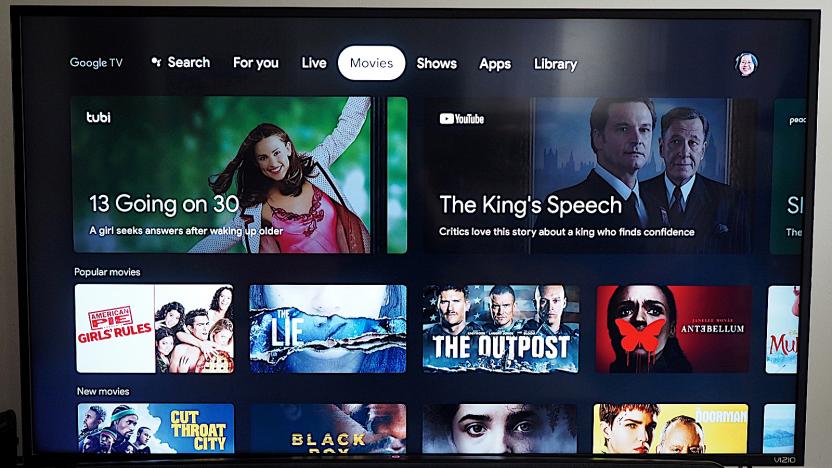
Android TV's next big update will improve picture-in-picture viewing
Android TV's major update this year will upgrade picture-in-picture video, among other features.

Android developers will get larger sales cuts if they support devices beyond phones
Google has rolled out a worldwide program that gives Android developers a larger cut of sales if they support tablets, watches, and other non-phone devices.
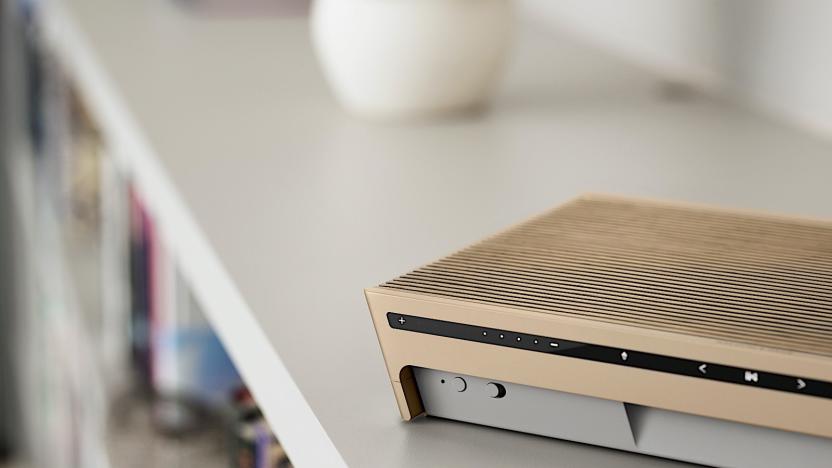
Bang & Olufsen's $1,500 'portable' speaker is designed to last decades
Bang & Olufsen's latest speaker is both portable and sports a modular design the company says will improve longevity. And, of course, it's expensive.
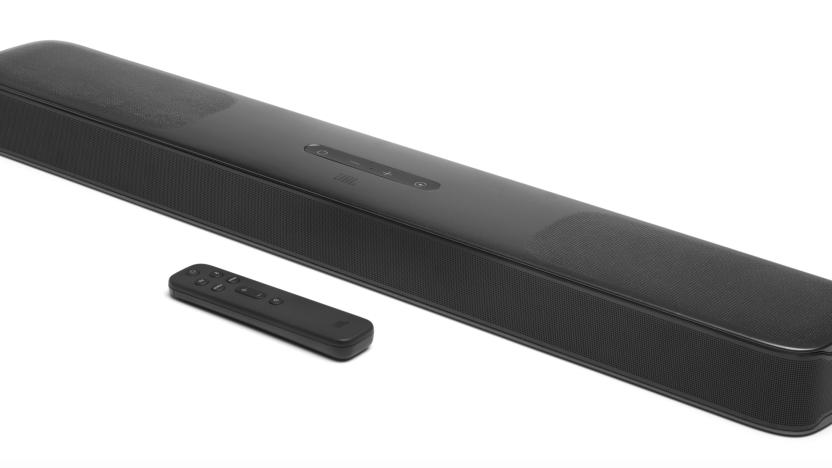
JBL's latest soundbar offers Dolby Atmos for $400
It was just last year that we got our first look at JBL’s first Dolby Atmos soundbar, so it’s little surprise the Harman-owned brand is taking at another, somewhat more sophisticated stab at one for 2021.
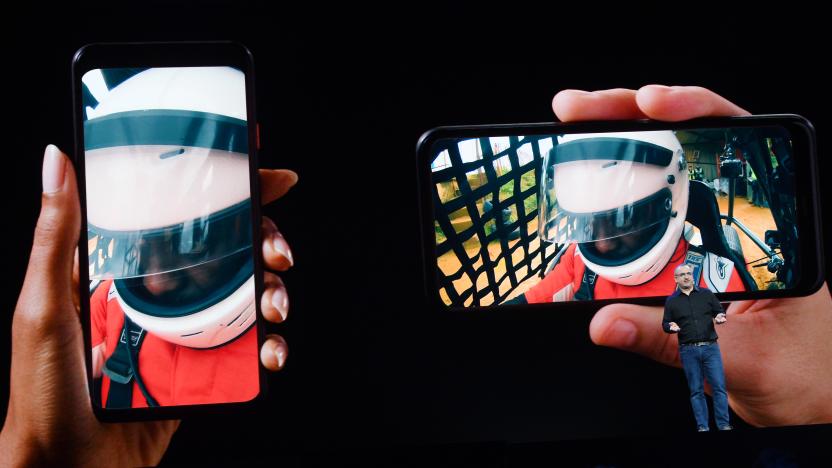
Quibi adds Chromecast support on iOS and Android
Quibi is built to serve up short videos for viewing on your phone or tablet, but now it's added support for Apple AirPlay and Google Chromecast tech so viewers can watch on their TVs too.
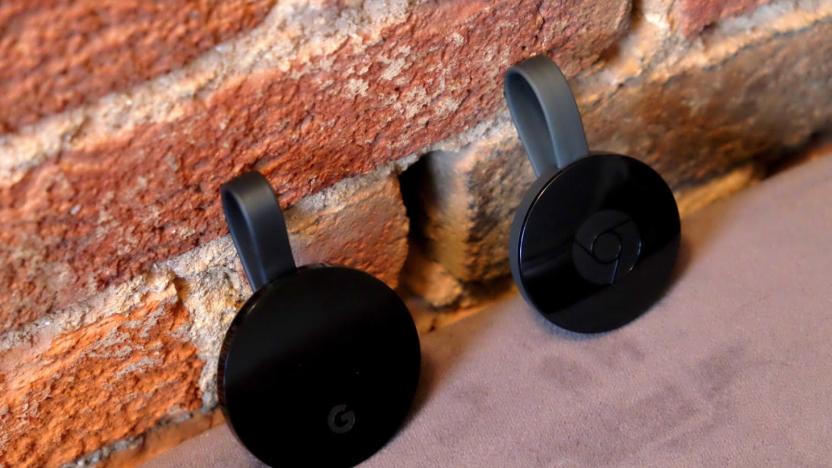
Google Assistant can now stream Hulu to your Chromecast and Nest Hub
If you own a Chromecast, TV with Chromecast built-in or Google smart display, you'll soon be able to ask Assistant to play and control content from Hulu. The update, first spotted by Android Police, is currently rolling out to the Google Home app, according to a statement from the search giant.
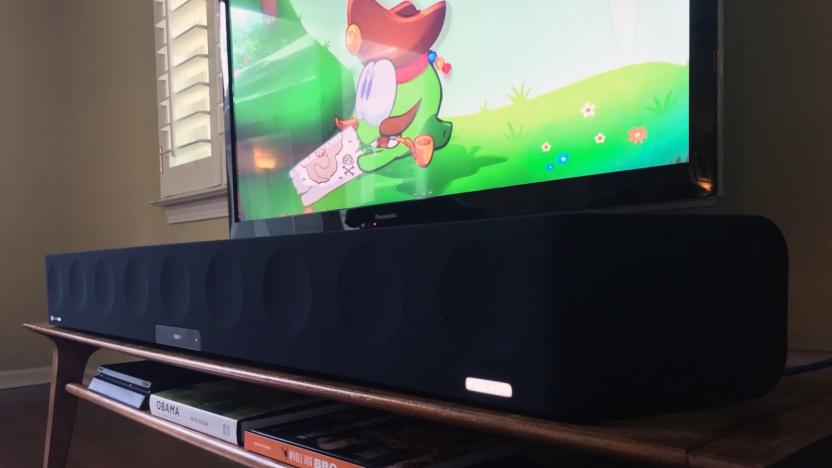
Sennheiser Ambeo Soundbar review: A full bag of tricks
Sennheiser has spread the gospel of its Ambeo tech for years. The broad pitch is incredibly immersive audio for AR, VR and your living room. As far as consumers are concerned, though, Ambeo is just a headset that records 3D audio and headphones for Magic Leap. At CES 2018, Sennheiser revealed it was cramming the technology inside a soundbar, so we could all use it for a more common activity: watching TV. It took the company another year and a half to release the $2,500 Ambeo Soundbar, and the wait was mostly worth it.
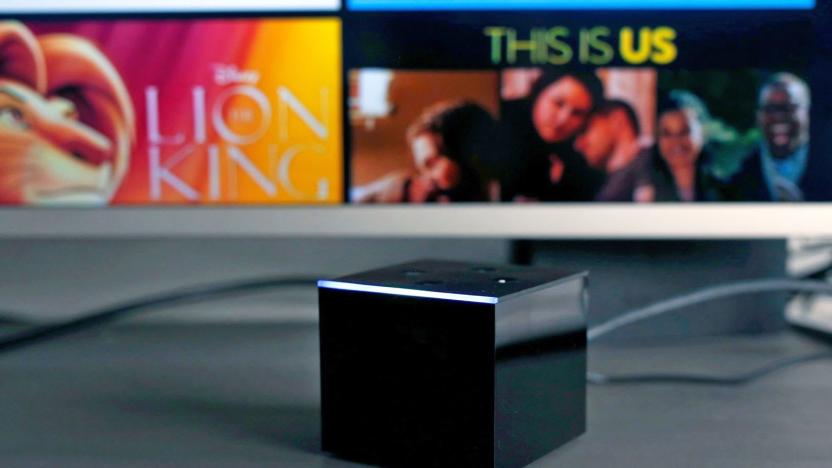
Google and Amazon end their ridiculous streaming video spat
Google and Amazon haven't historically been the best of friends, at least when it comes to their respective streaming video services. Amazon's Prime Video app hasn't worked with Google's Chromecast or Android TV devices, while YouTube was pulled from Amazon's Fire TV in late 2017. Well, there's good news for fans of both ecosystems: the Google / Amazon Cold War is thawing. YouTube will be available on Amazon's Fire TV devices in the coming months, and Amazon Prime video will work with Chromecast and Android TV devices as well. A Google spokesperson told Engadget that the main YouTube app is coming first, but YouTube TV and YouTube Kids will follow afterwards.
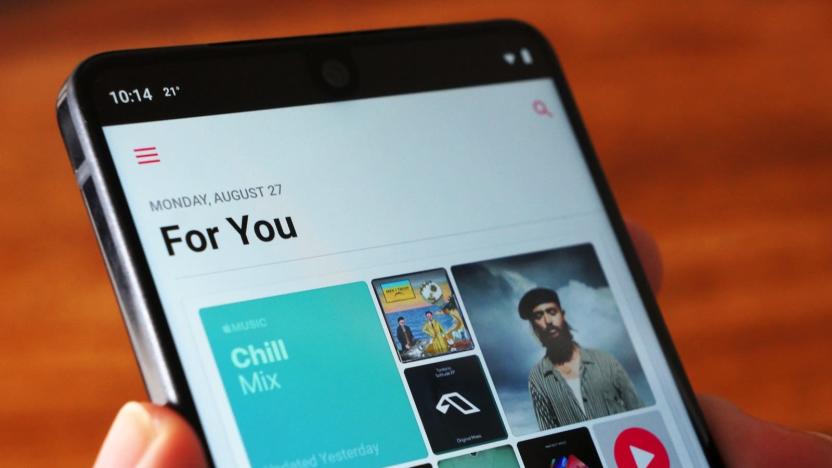
Apple Music code hints at Chromecast support
Whether or not Apple Music is coming to Google Home, there are signs you might get to use it with some Google-powered devices. The 9to5Google team has found multiple lines of code in Apple Music's Android app that reference Chromecast support, including some added through recent updates. While there's no guarantee this would be implemented any time soon, it suggests you could soon pipe Apple's latest Drake exclusive to a compatible Chromecast dongle, speaker, smart display or TV.

Google optimizes web versions of Play Movies and Music for Chromecast
The Chromecast is the tiny dongle that just keeps on giving. A mere couple of days after announcing support for a number of new applications, Google has let it be known that its $35 streamer is now compatible with Play Movies and Music on the desktop in a more native way. What this means is you will no longer have to rely on casting a Chrome tab to watch videos or listen to tunes ; instead, a Cast icon shows up within the Google Play web player and allows content to seamlessly be pushed to the device. Of course, there's still a requirement to have the Google Cast extension installed on your Chrome browser -- but this is a small price to pay in exchange for such useful functionality.

Hands-on with the Google Chromecast
The backordered TUAW Chromecast finally arrived yesterday evening from Google. We apologize for the delay in this write-up, but we simply didn't have a unit to test with. I felt, that for the sake of celebrating our native blog culture, I had to give it a proper unboxing. The Chromecast ships in a rather nice box, with the cast unit on top and the power cord and "bits" underneath. An internal flap offered getting started directions, while a firm plastic insert held the dongle itself. While not quite Apple-level of packaging (and despite a rather odd smell that pervades the box), the packaging was clean and professional. Getting the $35 unit working involved several quick and easy steps. First, I plugged the dongle into a HDMI port. Google provides a small HDMI extension cord -- and I mean small, perhaps 3" long -- in the box. Use this if you need to keep plugging and unplugging your dongle on a regular basis, so you can travel with it. The cord provides an easier access point, especially when reaching around the back of large television sets. Next, I plugged the unit into power. You must supply that power through a micro-USB port, the standard these days for many devices especially in Europe. Google provided an in-box wall plug for this, but I tested as well with a USB hub and with a portable battery pack. In fact, the reason I ended up using these workarounds is that in the heavily tech area of my office, I experienced major interference when using the plug. Switching to battery or hub cleared up the reception immediately. Testing on our family TV, which is where I performed the initial setup and exploration, offered no similar charger issues. It was only when I brought the unit down to explore iOS development that I encountered problems. I'm using a standard USB 3 hub to power the now office-based Chromecast. You must, of course, switch your TV input to the dongle's active HDMI port to begin setup. There you're greeted by a screen prompting you to connect to google.com/chromecast/setup. I did this on my Mountain Lion Mac, downloading both a standalone Chromecast configuration app and a Chrome browser specific plugin. I had to confirm a 4-character connection code, as you might with a Bluetooth connection, provide my SSID and password details, and was quickly ready to rock and roll. I honestly am not quite sure how the unit was able to announce itself and connect without using my Wi-Fi network, which is password protected. The Wi-Fi setup was the last part of the setup and my upstairs TV was well out of what I consider normal Bluetooth range when communication first began. It's a mystery that I'd love to unravel. [Update: Commenter SaintNicster unpacks this process for us. "The Chromecast, when first initialized, creates an ad-hoc WiFi network with the device you're using for setup. The setup process breaks the current WiFi session temporarily and then connects to the Chromecast. The setup then copies the previous WiFi information and sends that to the device. Once it has this information, the ad-hoc network is disabled and it reconnects to the normal WiFi." Thanks!] In all, the entire setup process took maybe a few minutes. It was really quick and very easy to get through to the "ready to cast" screen that greets you. As an OS X user, you'll want to work in the Chrome browser, for which I installed a Cast extension. After adding this, a Cast button appears at the top-right of every browser page. This button lets you select a Chromecast unit (yes, ours is called "Maisy"; my son picked the name), choose playback options and reach a help menu. The in-browser options are pretty simple. This is where you choose a projection quality and enable or disable fullscreen zoom and browser resizing. As you cast, your active Chrome browser tab mirrors to the Chromecast unit, appearing on the connected TV. You switch tabs or end casting using the browser pop-up. I found this feature to be occasionally buggy (yes, it's a beta). I found that when Chrome is experiencing too many yellow warnings for this pop-up, you can try quitting and restarting the browser and unplugging/replugging the dongle. When working properly, the Stop casting and Cast buttons apply instantly. At times, you do want to stop casting to reduce the load on your local Wi-Fi network. The Stop casting button enables you to do this. The Cast this tab button lets you switch between tabs without closing them. To test, I loaded up a variety of media including movies, music, and PDF documents into Chrome. They all played over quickly without issue and minimal delay. That said, if you cast over text, I recommend using the Extreme 720p high bitrate option. Without it, text looks unacceptably jaggy, especially when displayed on large screens. Movies worked far better. My son happily watched Hotel Transylvania over Chromecast until bedtime. Since I casted a browser, the audio file I opened and played appeared as an embed. Similarly, when I visited Spotify, I had to watch the static web page. I'm pretty sure this isn't an ideal experience for my TV's screen health, assuming if I had kept listening over time as I did chores or used the treadmill. As I mentioned earlier, one of my first tasks involved creating a custom iOS app to play to my Chromecast. I initially assumed I could use the Elgato EyeTV as I do with my Apple TV. EyeTV enables me to place the HDTV input side-by-side on my desktop with my dev work. For whatever reason, I could not get it to work with the Chromecast. EyeTV went into an infinite "adjusting to new mode" loop, attempting to display 1080p at 60fps, and never synced to or displayed the cast data. Although I tried down-streaming to 480p and up-streaming to 720p, I just couldn't get this to work. Instead, I ended up using my second monitor in normal TV mode. Although prettier than a squeezed and delayed EyeTV, this made it impossible to take direct screenshots of the device in action. The final piece of the OS X-based Chromecast puzzle is the standalone app that enables you to manage your devices from a single place. Here, you can set up Wi-Fi, name your Chromecast, set a time zone, force a reboot, and factory reset a Chromecast (for return to Google or resale). It's also where you find one-button access to download the Google Cast browser extension. To my surprise and delight, I discovered my iPhone was already cast-ready. The latest version of the YouTube app easily found and transmitted to my Chromecast. I was able to set up a not-for-distribution sample app using Xcode and the developer API and start sending data that way as well. After finding my unit's MAC address, I quickly discovered (courtesy of OS X command line port scanning) that it communicates on port 8008. That discovery led me to the Chromecast hacks community on Google plus. With several weeks head start, these (mostly Java) developers have been pushing the Chromecast's capabilities, mostly on Android. They've reversed the Remote Application Media Protocol (RAMP) used by the device to the point where they have custom apps running: Sample Java source code for general device access is now available on github. Hopefully this will be quickly ported to standard C, enabling Mac-based casting. I'm particularly excited about potential VLC extensions. On the iOS side of things, now that I have an actual device to work with, it will be interesting to explore (time permitting!) how to push development beyond the grab-and-send-a-URL point I"m currently at. From a consumer-only point of view, for just 35 dollars, I found the Chromecast to be a really nice receiver solution for our family. I plan to use it extensively with my Mac/EyeTV setup. Instead of having to watch my recordings on the Mac in my office, I can now transmit those through the Chrome browser up to our (much nicer) HDTV. I can also see this being used for travel, as I mentioned in an earlier post. The video transmission quality was excellent, except when eldest daughter decided to start watching Crunchyroll episodes simultaneously over the same Wi-Fi network. A bit of shouting and bribery helped us negotiate those waters. Unlike Apple TV, Chromecast does not offer an Ethernet port. While we could watch and transmit Amazon Prime videos from Chrome (we're not Netflix subscribers, which offers its own iOS app with built-in support) with their somewhat dubious transmission quality, we could not get iTunes rentals to play over without extreme hackery. (I will spare you the details of the hackery. Suffice it to say that it involved Apple TV, Eye TV, and a lot of time.) In the end, was it worth the $35? Yes. Will I keep using this device past the review period? Yes. Is it as good as Apple TV? It's not a real competitor, and it fills its own niche quite nicely. The Chromecast extends desktop media playback to an external HDTV and it does that well.

Adventures in Google Cast development: Day 1
Google's developer preview SDK for Google Cast -- the streaming technology that's powering the Chromecast hardware -- is up and running. It looks like adding Google Cast support will be ridiculously easy with little coding overhead for anyone who wants to jump on the bandwagon. Although the Chromecast stick we ordered here at TUAW will take a couple of weeks (at least) to arrive, the iOS SDK is already live and an iOS-specific project can be found over at Github. It consists of an app that more or less runs (you may want to comment out the bits about the playProgressSlider) and transmits arbitrary media to a Chromecast receiver. Unfortunately, as far as I can tell, you can't immediately use the receiver HTML on your local network to test transmission. Google writes in its Xcode README: Getting Whitelisted: App IDs and receiver location. You will have to be whitelisted as a developer before you can specify your own App ID and receiver URL, or test the included receiver. For whitelisting instructions, see https://developers.google.com/cast/whitelisting. You send along details about your testing device for whitelisting for your app. In all, it's a bit disappointing that you can't just simulate a receiver for immediate development and testing -- assuming I'm reading all the pages correctly -- without whitelisting a receiver URL and an app. Once you have a receiver URL set up and whitelisted for an app, you can use the receiver.html code included with the sample. I'd been hoping you could just use the built-in OS X Apache server without all the fuss and bother. The sample is remarkably simple even if it is a bit hard to read. You start listening for a device. If one is found, you establish a media protocol message stream; that is, you begin talking to the device. You point the media content to a URL and set yourself to listen for updates. At any point, you can push request like pause and play to the device or listen for status updates from the device using a delegate protocol. You can learn more about Google's developer preview at the Google Cast site. Fun facts: Google Cast uses SSDP for device discovery. Details are in the GCKDevice.h header file. You receive notifications as device appear online or disappear. You can buy an inexpensive router if your Wi-Fi reception is iffy. This one is cheap and reasonably well reviewed. You should also be able to create a network if you have a Mac along with you.

Why Chromecast may be cool after all
Today, in the TUAW backchannels, we've been discussing Chromecast, Google's sub-$40 streaming dongle for television sets. I like the idea and will probably buy one. If I'm understanding the early publicity correctly, Google has two really strong use cases, but I don't think it's any kind of "competitor" to Apple TV. It's another thing entirely. The real draw for Apple TV isn't mirroring. Sure it mirrors, and sure you can stream data out to it, but you do so with a lot of DRM issues -- with the motion picture and recording industries hovering over your shoulder and making sure you behave. (That's probably a big reason why Google isn't open-sourcing their SDK.) No, the reason people use Apple TV is the content. The draw is Netflix. The draw is Apple special events. The draw is music and slideshows. The draw is any of the other subscription services that let people like Dave Caolo watch baseball. You don't have to bring your phone to ship over compelling material, you just sit on your couch and watch. The Chromecast supports a few services pushed from mobile devices now, like Netflix (although the free ride is over already). Over time, more apps will appear, and one thing they'll all have in common is the device-to-dongle WiFi transmission. Chromecast does not provide a native interface the way the Apple TV does. While content streaming makes sense for some things -- presentations, sharing photos, etc. -- it's not always the best for high bandwidth TV shows and movies. That's why Apple TV comes with an Ethernet port and onboard services that let you catch up without having to mess around with your cell phone or tablet. Admittedly, some of the best things about AirPlay involve game playing, but in my experience -- and that of the devs I consulted with -- it's an extremely minor part of the marketplace, at least at this time. (Ask me again in the fall, when we start to see some of those custom controllers working with phones and iPads.) So where do I expect Chromecast to succeed? For travel -- both business and personal. First, I think it's just dandy for anyone who has business meetings. It is a small, inexpensive dongle without a lot of cords or overheads -- besides the power cords never shown in the promo photos. Still, it will be a mostly trivial affair to pull out your Android or iOS phone and get to presenting, especially with business-supplied Wi-Fi (or, in a pinch, with your own pocket router). I think that's a ridiculously strong and appropriate use of the system. [Note that not all business or enterprise WiFi networks are particularly Apple TV-friendly, depending on their security and routing configurations. It's yet to be seen if Chromecast will be subject to the same networking hurdles, but in the meantime bringing your own router or a 4G hotspot when working with either technology is a good safety net, as is an old-fashioned VGA or HDMI adapter. –Ed.] Second, for low-bandwidth (!) movies and TV shows and music, say when visiting a hotel and watching content from your phone or tablet? I can't see how that's going to be a bad thing at all. (Assuming the hotel offers an HDMI input on its TVs, of course.) I know I'm going way out on a limb here, but I could really see Apple following suit on this, offering an Apple TV 2 Go dongle. The idea of extending AirPlay to a dongle? I just really love that concept. I'm not sure how good or bad Chromecast will be, but I get why Google wants to go there.

Are you an iOS developer eyeing the Chromecast? You better ask permission first
Yesterday's announcement of Google's new Chromecast accessory could mean big things for iOS developers who want to throw their content on to the big screen without worrying about wires, but tucked away in Google's developer portal is a rather interesting note regarding the Google Cast API required to make an app compatible with the new device: You may not publicly distribute or ship your Google Cast application without written permission from Google, per the terms of service described below. This opaque requirement for Chromecast-enabled apps stands in stark contrast to Google's much more lax approach to open app development, and it's not particularly clear what type of content Google is hoping to filter out. If you happen to be working on making your own iOS app play nice with Chromecast, you'll want to get in touch with Google at chromecast-updates@google.com. Note: Google has since updated the Google Cast Downloads page to include notes regarding the Google Cask SDK, stating that the current version available for download is strictly for developmental purposes only. This may or may not explain the requirement that developers clear all apps with Google before moving forward. We've reached out to Google for clarification and will update if/when we hear back.







